There’s something undeniably magical about exploring America’s natural treasures aboard a historic train. As the wheels clack rhythmically along steel rails laid decades or even centuries ago, passengers are transported not just through stunning landscapes but also back in time. National park train rides and historic railways offer a unique vantage point for experiencing the grandeur of America’s protected wilderness areas, combining the romance of rail travel with the awe-inspiring beauty of our national parks. These journeys allow travelers to witness breathtaking vistas from vintage train cars, often following routes that were instrumental in opening up these remote regions to tourism and conservation efforts. From steam locomotives chugging through pristine forests to narrow-gauge railways climbing seemingly impossible mountain passes, these rail adventures represent some of the most memorable ways to experience America’s natural heritage.
Grand Canyon Railway: Gateway to the South Rim

The historic Grand Canyon Railway has been transporting visitors from Williams, Arizona, to the South Rim of Grand Canyon National Park since 1901. This 65-mile journey takes passengers through high desert plains and pine forests before arriving just steps from the canyon’s edge. The railway played a crucial role in the park’s early tourism development, and today’s trips feature lovingly restored vintage coaches and locomotives that evoke the golden age of rail travel. Passengers are treated to onboard entertainment including musicians playing western songs and staged train robberies that bring the Wild West era to life. The railway reduces vehicle traffic within the park significantly, serving as both a nostalgic experience and an environmentally responsible transportation option for experiencing one of America’s most iconic natural wonders.
Durango & Silverton Narrow Gauge Railroad: Colorado’s Mountain Marvel
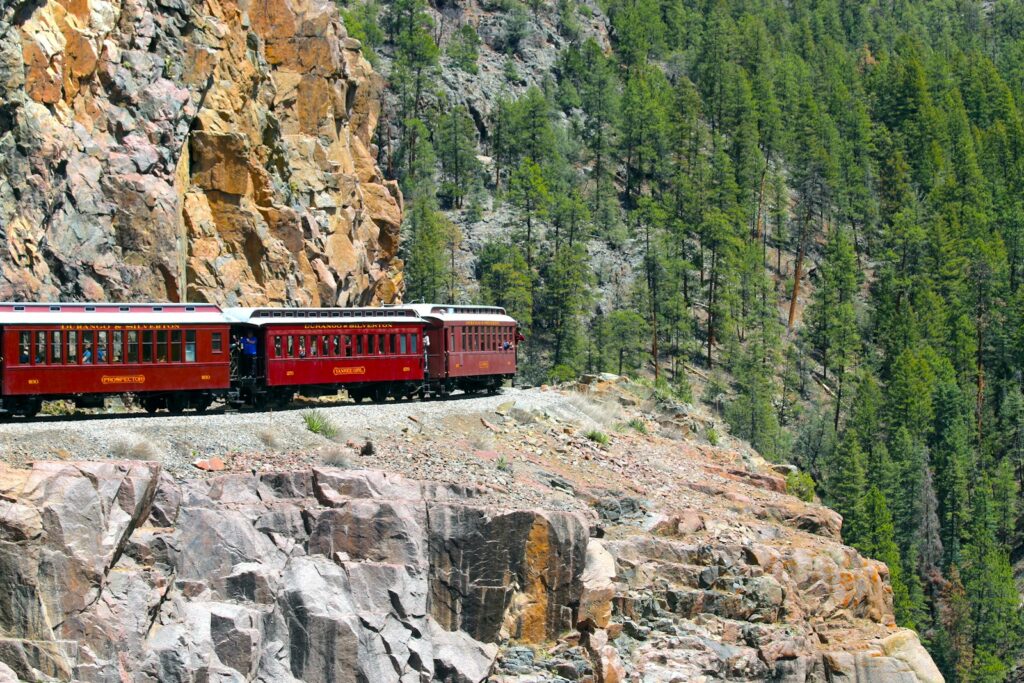
Winding through the spectacular San Juan Mountains of southwestern Colorado, the Durango & Silverton Narrow Gauge Railroad offers one of America’s most breathtaking rail journeys. This historic railway has operated continuously since 1882, initially built to transport silver and gold ore from the mining town of Silverton. Today, coal-fired steam locomotives pull vintage cars along a narrow-gauge track that hugs precipitous mountain ledges and crosses the rushing Animas River countless times. The 45-mile route climbs from Durango at 6,512 feet to Silverton at 9,305 feet, offering passengers unparalleled views of wilderness areas within the San Juan National Forest. The railway’s authentic 19th-century equipment and operational methods have made it a favorite location for numerous Western films and a designated National Historic Landmark that provides access to some of Colorado’s most pristine backcountry.
Cumbres & Toltec Scenic Railroad: America’s Highest and Longest Narrow Gauge

Straddling the Colorado-New Mexico border, the Cumbres & Toltec Scenic Railroad stands as America’s most authentic steam-operated railroad and the longest narrow-gauge line still in operation. This 64-mile route traverses remote landscapes between Antonito, Colorado, and Chama, New Mexico, passing through terrain that remains largely unchanged since the railroad’s construction in 1880. The journey includes passage over 10,015-foot Cumbres Pass, making it the highest railroad pass in the United States, and features spectacular crossings of Toltec Gorge, where the tracks cling to steep cliff sides hundreds of feet above the rushing Rio de los Pinos. Designated as a National Historic Landmark, the railroad operates meticulously maintained steam locomotives and vintage passenger cars that have been preserved rather than restored, maintaining their historical integrity. The route passes through sections of the Carson National Forest and offers access to wilderness areas that would otherwise be difficult to reach.
Mount Rainier Scenic Railroad: Journey Through Ancient Forests
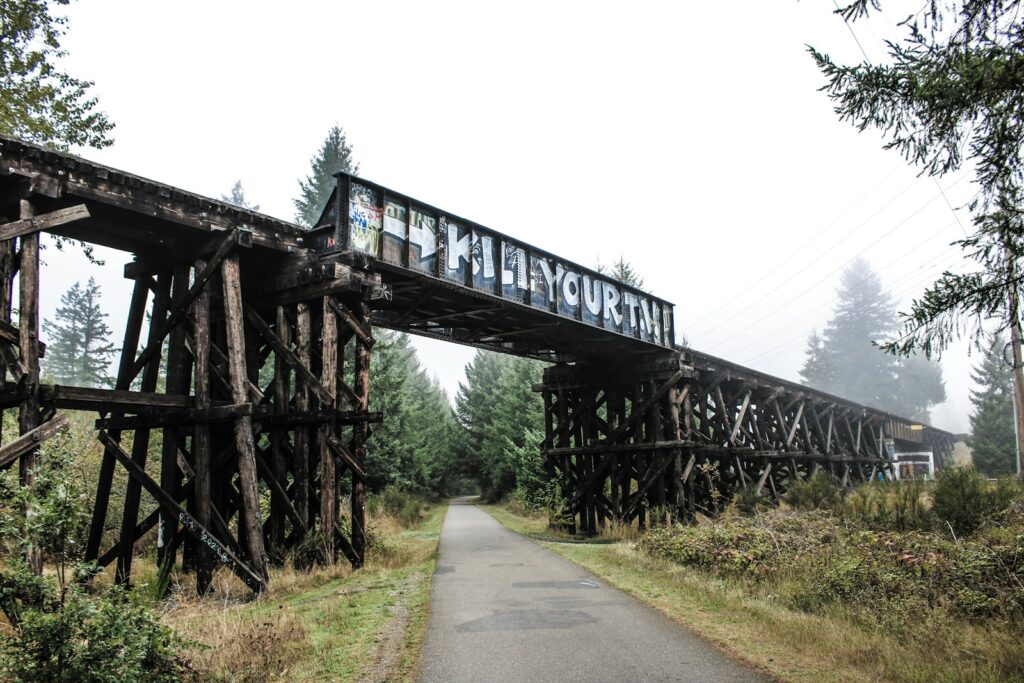
The Mount Rainier Scenic Railroad provides a unique perspective on the old-growth forests surrounding Washington’s iconic Mount Rainier National Park. Operating on historic logging routes that once transported massive old-growth timber, this heritage railroad now offers passengers glimpses into both natural wonders and industrial history. The journey takes visitors through dense stands of Douglas fir, western red cedar, and western hemlock, some of which are hundreds of years old and tower over the tracks. Steam locomotives dating from the early 20th century pull vintage cars through landscapes that showcase glacial rivers, wildflower meadows, and occasionally, views of Mount Rainier itself when weather permits. The railroad’s route and equipment pay homage to the Pacific Northwest’s logging heritage while providing access to pristine natural areas within the shadow of one of America’s most impressive volcanic peaks.
White Pass & Yukon Route: Alaska’s Gold Rush Legacy
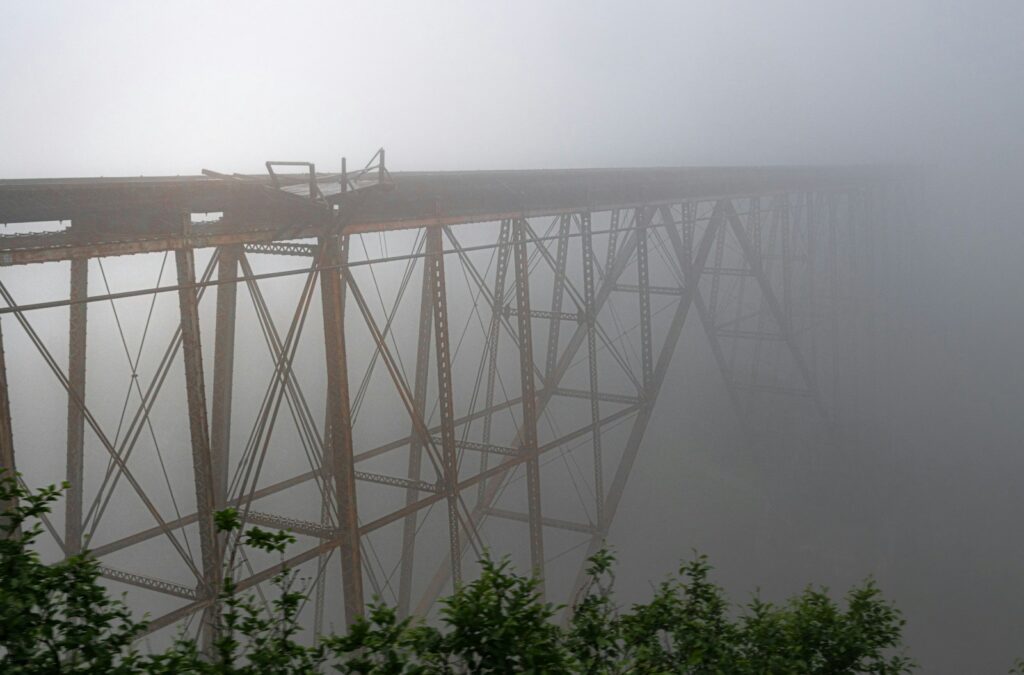
Built during the Klondike Gold Rush of 1898, the White Pass & Yukon Route Railway stands as an engineering marvel that conquered seemingly impossible terrain between Skagway, Alaska, and Whitehorse, Yukon Territory. Today, this narrow-gauge railroad operates primarily as a tourist attraction, with most excursions covering the 20-mile segment from Skagway to White Pass Summit. The route climbs nearly 3,000 feet in elevation over its brief distance, featuring steep grades and tight curves as it ascends through Tongass National Forest and into alpine terrain. Passengers witness spectacular views of mountains, gorges, glaciers, and waterfalls while vintage diesel locomotives push and pull historic passenger cars along cliff-hugging sections of track built by gold-seekers over 120 years ago. Designated as an International Historic Civil Engineering Landmark, the railroad provides access to remote sections of wilderness in Klondike Gold Rush National Historical Park and serves as a living museum of Alaska’s gold rush heritage.
Great Smoky Mountains Railroad: Journey Through America’s Most Visited National Park

The Great Smoky Mountains Railroad offers passengers breathtaking excursions through the North Carolina side of Great Smoky Mountains National Park, America’s most visited national park. Operating on historic rail lines that once served as vital transportation corridors through the rugged Appalachian Mountains, the railroad features two primary routes: the Nantahala Gorge Excursion and the Tuckasegee River Excursion. The Nantahala route is particularly spectacular, following the Tennessee and Nantahala Rivers deep into the gorge, crossing Fontana Lake on a trestle bridge, and passing through the Nantahala National Forest. Vintage diesel locomotives pull a variety of passenger cars, including open-air gondolas that allow unobstructed views of the dense hardwood forests, tumbling mountain streams, and dramatic rock formations. The railroad operates special seasonal excursions, including fall foliage tours when the Smoky Mountains explode with autumn colors and themed rides that celebrate the region’s rich cultural heritage.
Cass Scenic Railroad: Logging History in the Appalachians
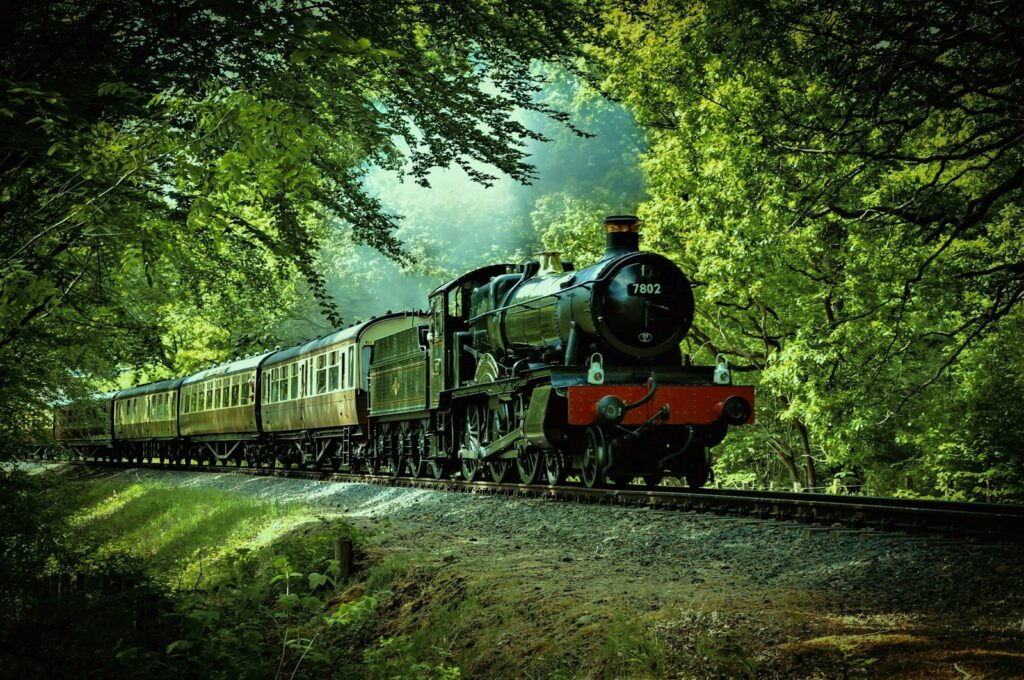
The Cass Scenic Railroad in West Virginia offers visitors a journey back to the early 20th century, when steam-powered locomotives transported timber from the mountains to the valley below. Operating entirely within Cass Scenic Railroad State Park, this remarkable heritage railroad features the world’s largest collection of operating Shay locomotives – a geared steam engine specifically designed for hauling heavy loads on steep grades and sharp curves. The main excursion climbs more than 2,000 feet in elevation from the restored company town of Cass to Bald Knob, the third-highest point in West Virginia, offering expansive views of the surrounding Monongahela National Forest. The powerful Shay locomotives labor dramatically up grades as steep as 11 percent, belching smoke and steam as they conquer the mountain just as they did a century ago when the line served the Cass logging operation. The authentic logging railroad experience includes not just the train ride but also tours of the working locomotive shop and the restored company town, providing a comprehensive glimpse into Appalachian industrial heritage.
Mount Washington Cog Railway: Climbing New England’s Highest Peak
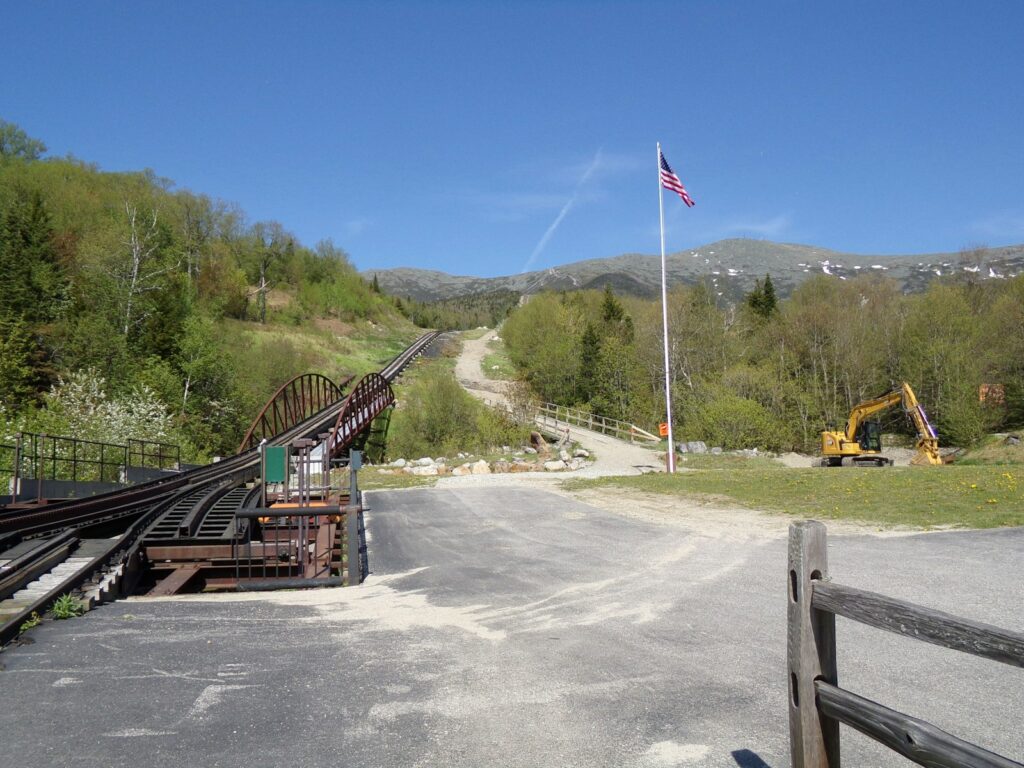
The Mount Washington Cog Railway in New Hampshire holds the distinction of being the world’s first mountain-climbing cog railway and remains the second steepest rack railway in the world. Since 1869, this engineering marvel has been carrying passengers to the 6,288-foot summit of Mount Washington, the highest peak in the Northeastern United States and part of the White Mountain National Forest. The railway ascends grades as steep as 37.41 percent using a unique cog system that engages with a toothed rack rail, allowing the locomotives to push passenger cars safely up inclines too steep for conventional adhesion railroading. The three-mile journey takes passengers through multiple climate zones, from the hardwood forests at the base through scrubby alpine zones to the barren, windswept summit, which is famous for having recorded the world’s fastest wind speed (231 mph) in 1934. While most trips now use biodiesel locomotives, the railway still operates one coal-fired steam locomotive daily, allowing passengers to experience 19th-century mountain railroading in its most authentic form.
Yosemite Mountain Sugar Pine Railroad: Journey Through Sierra National Forest
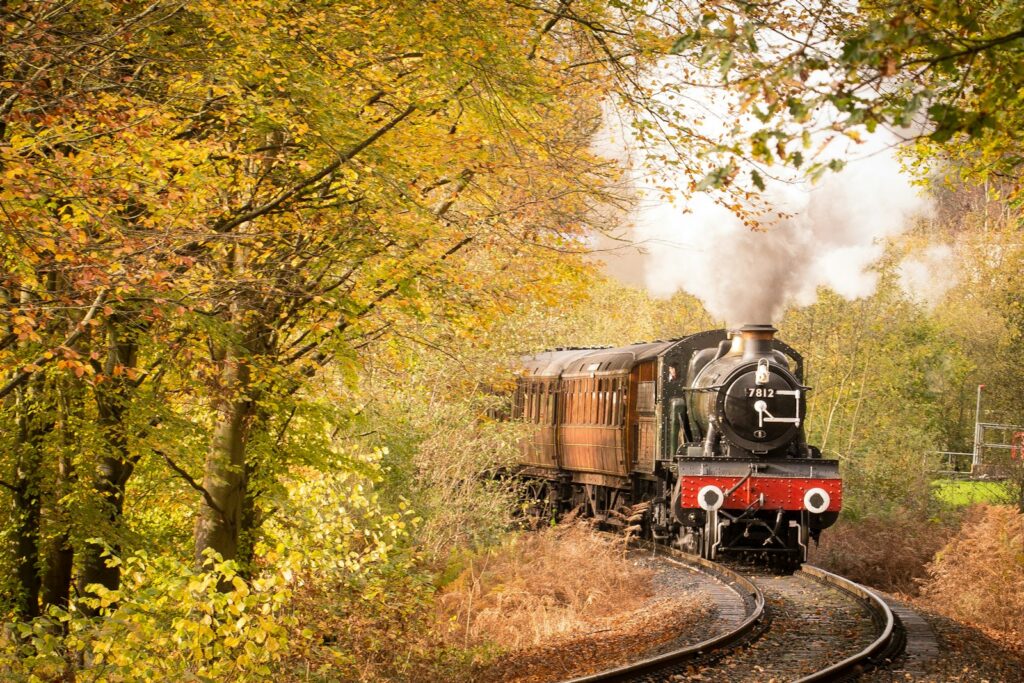
Located just outside Yosemite National Park’s south entrance, the Yosemite Mountain Sugar Pine Railroad offers visitors a glimpse into the area’s logging history while traversing beautiful sections of the Sierra National Forest. Operating on a portion of the former Madera Sugar Pine Lumber Company’s railroad grade, this narrow-gauge heritage line uses authentic Shay steam locomotives to pull trains through stands of ponderosa pine, sugar pine, and incense cedar. The railroad’s hour-long journey follows the original right-of-way used to haul massive sugar pine logs to the sawmill in the early 1900s, passing through the site of an old logging camp and showcasing both natural beauty and industrial heritage. Evening “Moonlight Special” excursions are particularly popular, featuring a stop in the forest for a barbecue dinner and live music around a campfire before returning under starlit skies. The railroad serves as both an entertaining attraction and an educational resource about sustainable forestry practices and the history of logging in the Sierra Nevada region.
Glacier Park Historic Red Bus Tours: Combining Vintage Transport with Spectacular Scenery
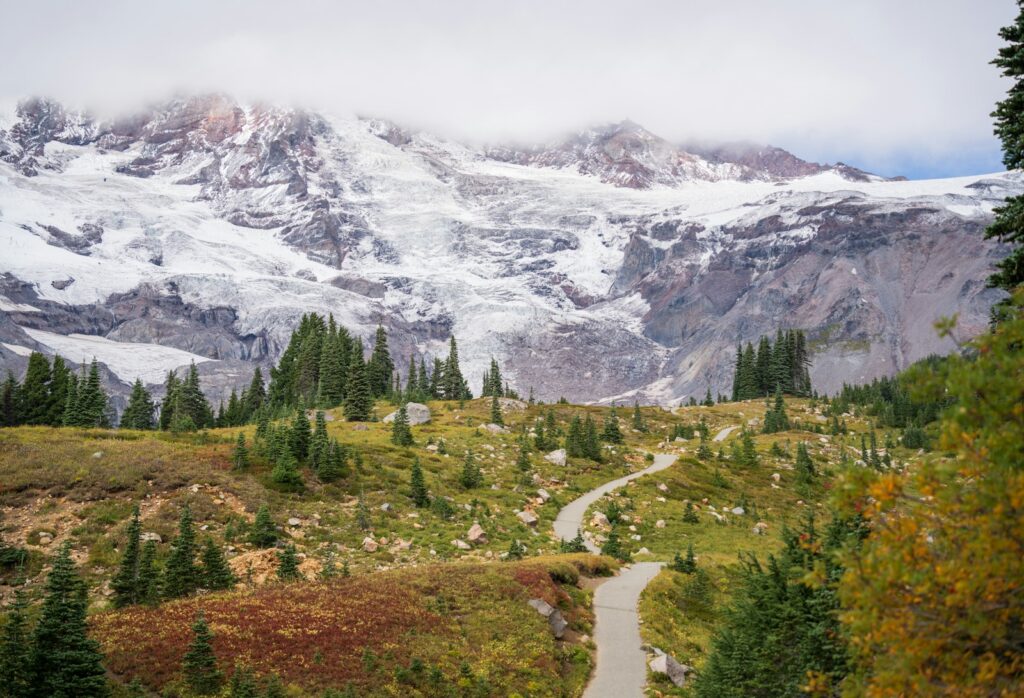
While not a railway in the traditional sense, Glacier National Park’s fleet of historic Red Buses deserves mention as one of America’s most iconic national park transportation experiences. These distinctive red tour buses, manufactured by the White Motor Company in the 1930s, feature roll-back canvas tops that provide panoramic views of the park’s spectacular mountain scenery. The buses travel the famous Going-to-the-Sun Road, a 50-mile engineering marvel that crosses the Continental Divide at Logan Pass and offers passengers unparalleled views of glacially carved valleys, alpine meadows, and towering peaks. Knowledgeable driver-guides, known as “jammers” (a nickname derived from the sound made when shifting the original unsynchronized transmissions), provide commentary on the park’s natural and cultural history throughout the journey. The Red Bus fleet represents the oldest continuous fleet of touring vehicles anywhere and was completely restored in the early 2000s with modern chassis and environmentally friendly propane engines while maintaining their historic appearance.
Grand Canyon National Park Railway: North Rim Limited
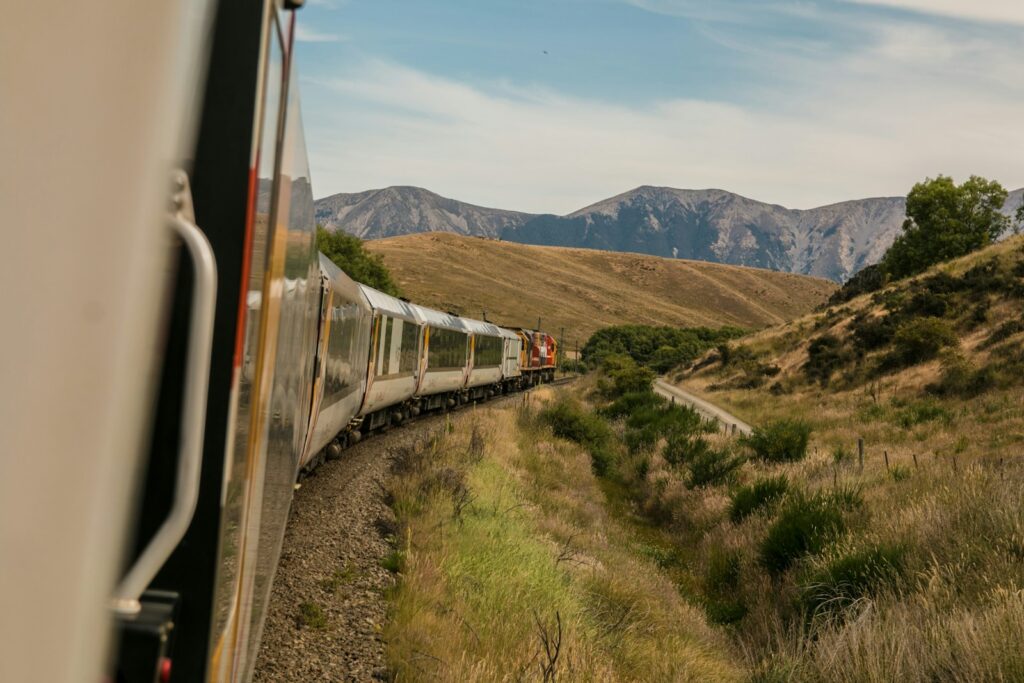
While less famous than its South Rim counterpart, the North Rim Limited railway provides access to the less-visited but equally spectacular North Rim of Grand Canyon National Park. Operating seasonally (typically May through October, when the North Rim is open), this historic line traverses some of the most remote landscapes in the American Southwest. The journey begins in Cedar City, Utah, and travels through high-elevation forests of ponderosa pine and aspen before descending toward the Grand Canyon through color-changing rock formations that preview the canyon’s own geological story. Vintage diesel locomotives pull restored passenger cars from the mid-20th century, offering a more intimate experience than many other national park railways with smaller passenger loads and a focus on the area’s natural history. The North Rim receives only about 10% of Grand Canyon visitors compared to the South Rim, and the railway journey reflects this more serene atmosphere, allowing passengers to experience the breathtaking landscape without crowds.
Napa Valley Wine Train: Historic Railway Through America’s Premier Wine Region
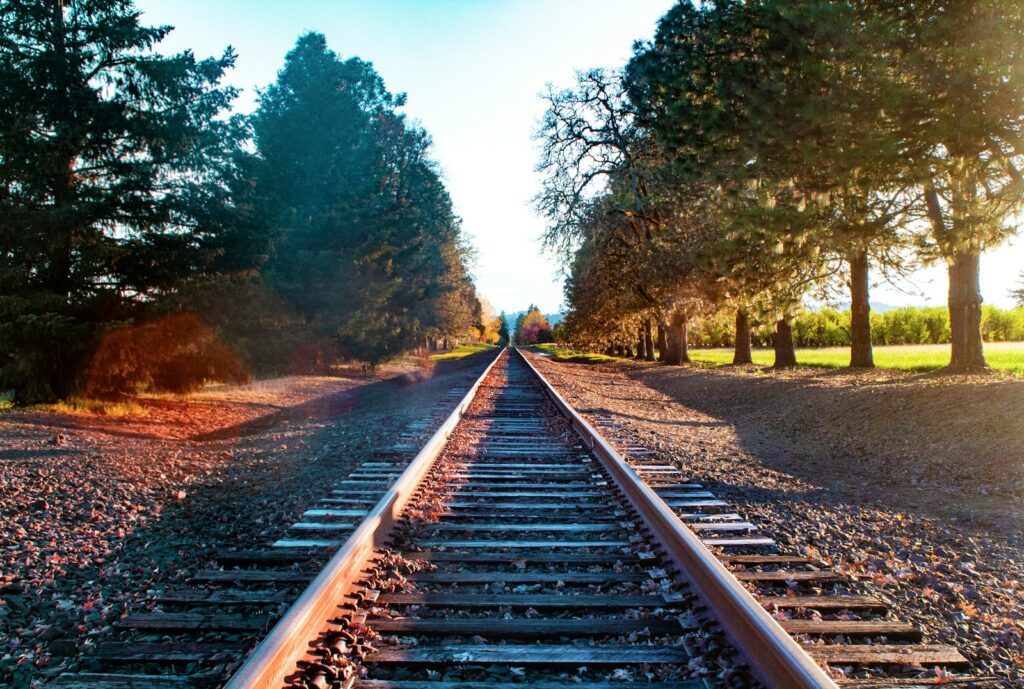
The Napa Valley Wine Train offers a luxurious rail journey through the heart of California’s most famous wine-producing region, traveling a historic rail corridor that dates back to the 1860s. While not directly serving a national park, this heritage railway passes through landscapes protected by various conservation easements and showcases the agricultural heritage of a region renowned for its natural beauty. Meticulously restored Pullman cars from the early 20th century feature mahogany paneling, brass accents, and plush armchairs, creating an atmosphere of refined elegance as passengers enjoy gourmet meals prepared in the train’s kitchen cars. The 36-mile round-trip journey between Napa and St. Helena offers views of rolling vineyard-covered hills, historic stone wineries, and the Mayacamas Mountains that form the valley’s western border. The railway operates various themed excursions, including sunset dinner trains and tours that combine rail travel with visits to prestigious wineries, allowing passengers to experience both natural beauty and world-class viticulture in a single journey.
Planning Your National Park Railway Adventure

When planning a national park railway journey, timing can be as important as destination selection. Most scenic railways operate seasonally, with peak periods typically aligning with summer months when weather conditions are most favorable. Fall excursions offer spectacular foliage viewing opportunities, particularly on eastern routes like the Great Smoky Mountains Railroad and western alpine railways where aspens turn brilliant gold. Booking well in advance is essential, as these popular experiences often sell out months ahead, especially for premium seating options and special event trains. Consider complementing your rail journey with overnight stays in historic park lodges or nearby communities that preserve their railroad heritage through museums and restored depots. Many railways offer various classes of service, from standard coach to luxury dome cars or parlor cars, allowing travelers to customize their experience based on budget and preferences. For photography enthusiasts, open-air cars provide unobstructed views but require preparation for changing weather conditions, while climate-controlled cars offer comfort in all weather scenarios.
These historic railways not only provide access to some of America’s most stunning natural landscapes but also preserve an important chapter in the nation’s transportation history. By choosing to explore national parks and protected areas by rail, travelers connect with both natural and cultural heritage while experiencing spectacular scenery from a unique perspective. Whether climbing steep mountain grades behind a laboring steam locomotive or gliding alongside pristine rivers in restored vintage coaches, these journeys create memories that last far longer than the train rides themselves. In an age of fast-paced travel, these historic railways invite passengers to slow down and appreciate both the journey and the destination—a fitting approach to experiencing the timeless grandeur of America’s national parks.

